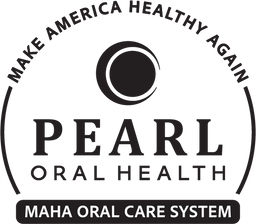Clostridium difficile, aka C-Diff, has resulted in a rather common infection diagnosis, with approximately 200,000 cases per year. Clostridium difficile is readily transmissible by traveling bacterial spores from person to person and notably hard to get rid of once it sets up shop in a medical or community environment.
There is an ongoing effort to find new and more effective treatments. Hypochlorous acid is one solution. To properly discuss the efficacy of a proposed solution, we must first briefly discuss the illness itself.
What is C-Diff?

C-Diff or Clostridium difficile colitis is an inflammation of the colon caused by the Clostridium difficile bacteria. C. Diff bacteria are present all around us, in the air, water, soil, and fecal matter of humans and animals. Many people have the bacteria present in their intestines and never experience any adverse effects.
Problems with the existing C. Diff bacteria often emerge when you take antibiotics to get rid of bacterial infection and get rid of the good bacteria that keep Clostridium difficile in check. You can also become infected with Clostridium difficile through contact with contaminated clothing or sheets and then proceed to touch your mouth or nose.
Clostridium difficile infections result in frequent watery diarrhea, severe cramping, fever, nausea, loss of appetite, and dehydration. Although antibiotics are frequently the culprits in triggering C-diff infections, there are some that target Clostridium difficile as well. They include Metronidazole, Vancomycin, and Fidaxomicin.
C-Diff infections tend to be quite stubborn and can be challenging to remove from the body. They can also recur with frequency, especially while awaiting the natural re-population of healthy bacteria in your intestines. You may also experience challenges with C-Diff recurrence if you live in a long-term care facility or are a patient in the hospital.
Hypochlorous Acid as A C-Diff Solution
What is Hypochlorous Acid?
Hypochlorous acid is sometimes referred to as nature’s oldest disinfectant. It is also resident inside your body as you sit here reading this. This is because hypochlorous acid is the substance your white blood cells naturally produce to help fight off infections.
It is also the active ingredient in electrolyzed water, which is used for green cleaning and sanitizing. Finally, hypochlorous acid is the ingredient that gives bleach its antimicrobial power.
As previously noted, hypochlorous acid is a naturally occurring product in the human body. However, it can be artificially created outside the body as well.
Medical Uses for Hypochlorous Acid
Hypochlorous acid is quite safe for use in the healthcare and the medical environment as a disinfectant. Hospitals here in the United States use it to destroy bacteria as it is highly effective. It has also been approved by the Food and Drug Administration (FDA) for use as in wound healing, wound care, and eye care products.
Hypochlorous acid is used in medical and hospital settings to eliminate many different bacteria, viruses, and germs. Certain HOCl products have been shown to be effective on hard to eliminate pathogens. Our favorite HOCl disinfectant is Nixall® which kills a wide range of bacteria including Staphylococcus aureus MRSA, Salmonella enterica, Pseudomonas aeruginosa, multiple drug-resistant bacteria, Virucide, Tuberculocide, Bactericide, Germicide, and HIV (Aids virus).
All things considered, hypochlorous acid will eliminate Clostridium difficile when appropriately used as a disinfectant. It will also get rid of other pathogenic microbes that are commonly regarded as difficult to eliminate. Keep in mind, hypochlorous acid is the primary ingredient in bleach.
Currently, there are various product options for C-diff. Currently there are studies being conducted that will need to be cleared by the FDA. Some products containing HOCl have been cleared as a medical device as numerous studies conducted by universities and private certified labs will continue.
Visit Holistic Dentistry USA for more articles on Hypochlorous Acid.


